By Felicity Hughes
Antigua Casa Talavera

Tucked away on Calle Isabel la Católica, Antigua Casa Talavera is a hidden gem for fans of ceramics. Inside you’ll find a plethora of hand-painted artisanal objects: bowls, plates, tiles, and even amphora (jars used since ancient times to hold olive oil or wine). Opened in 1904 as one of the oldest stores, it is run by fourth generation owner José Senespleda, who is a delight to talk to. He’s extremely well informed about the history of ceramics, and more than happy to converse in either English or Spanish.
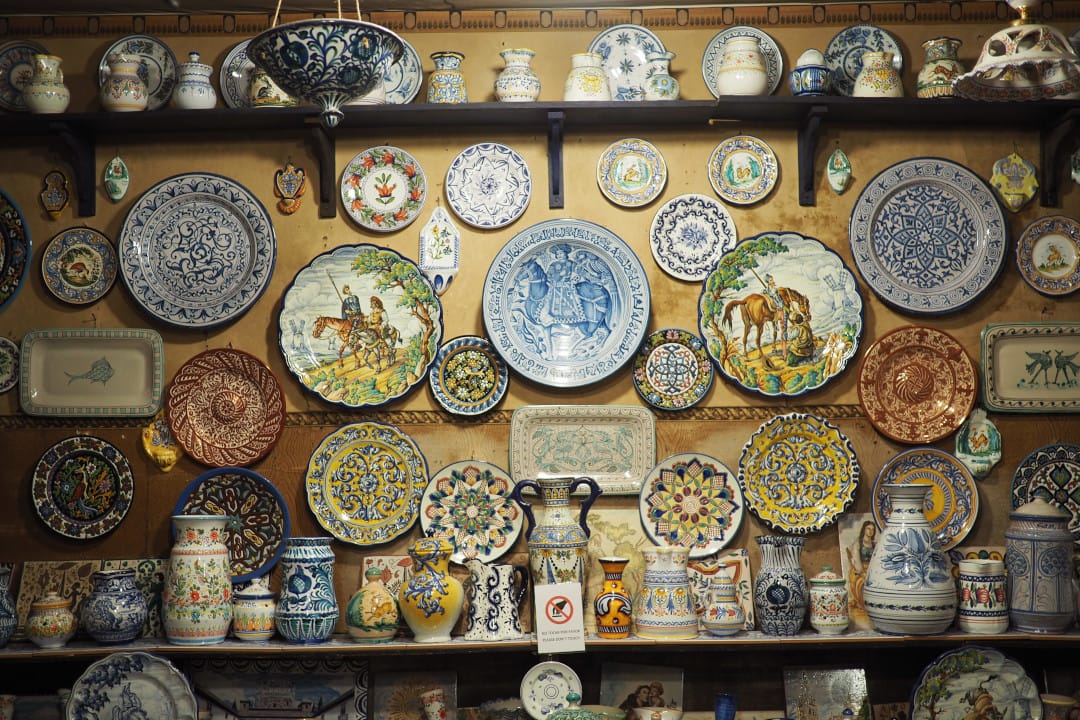
As suggested by the store’s name, they carry ceramics from the nearby city of Talavera de la Reina. It happens to be the town that spawned Madrid’s spectacular ceramic renaissance in the early 20th century. But there is also work from Alcora, Sevilla, Onda, Andujar, Ribesalbes, and la Bisbal. Everything is hand painted by artisans, even down to the floor tiles and the wonderful shop frontage, which depicts Saint Leopold and scenes from Don Quixote. While the items on sale are not cheap, nothing is mass produced. – Calle de Isabel ‘La Católica’, 2
Casa de Diego
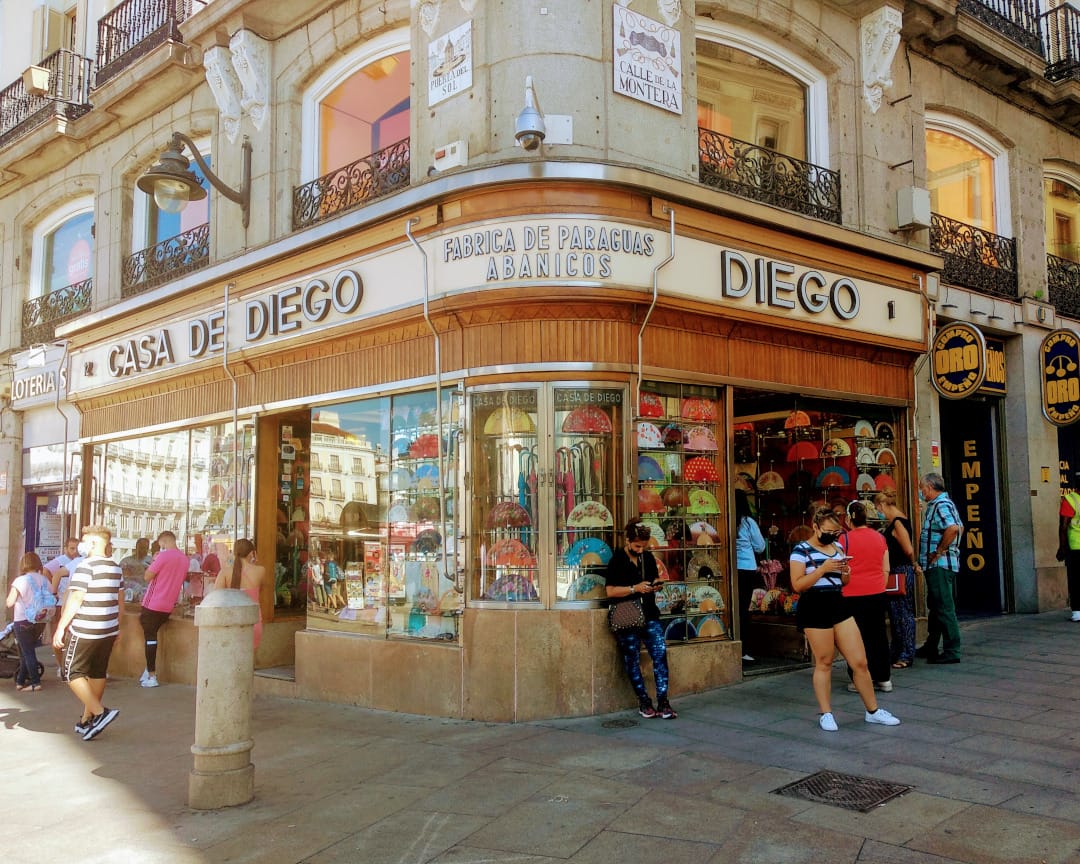
“Wrapping this shawl around one’s shoulders is like dressing up in a painting,” wrote the great Madrileño novelist, Benito Pérez Galdós. He was referring to the Manila shawl, a garment that has become emblematic of Spain. Initially put together in Manila, these shawls marry Chinese silk with Moorish fringing and Spanish-style embroidery. They are a reflection of the disparate cultural influences that have flowed through the country for centuries.
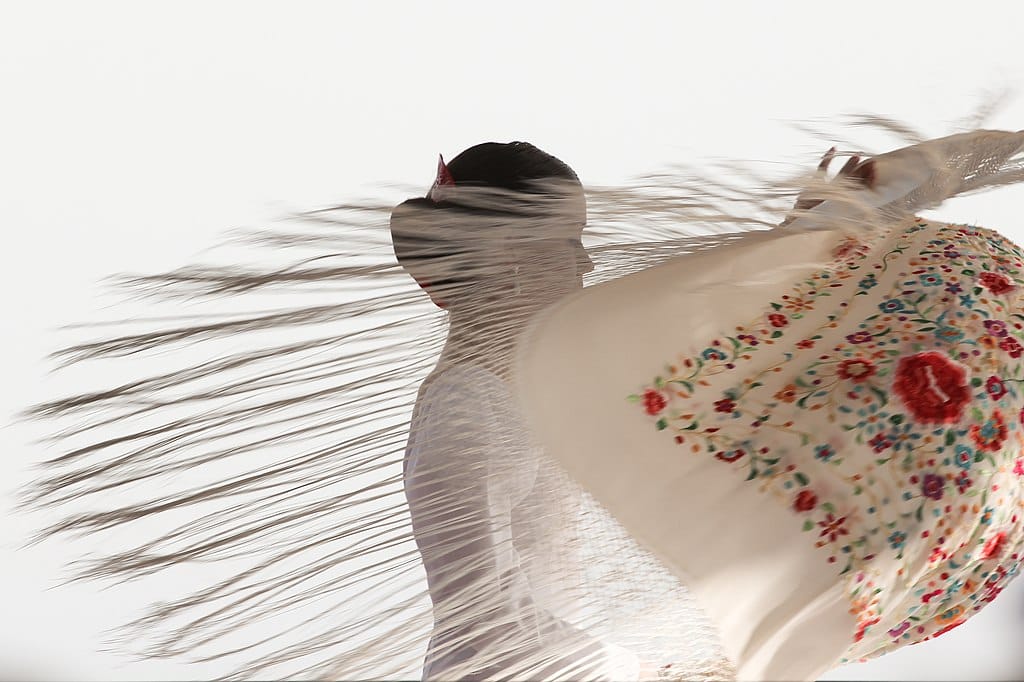
In Galdós’ novel, set during the late 19th century, the shawls are beginning to go out of fashion. But when Casa de Diego was opened in 1823, they were still a hot item and have been so since then. Along with Manila shawls, you can also buy handcrafted fans, peinetas (ornamental combs), and castanets. Located in Puerta del Sol, the shop still retains its old-world charm – Puerta del Sol, 12
Seseña
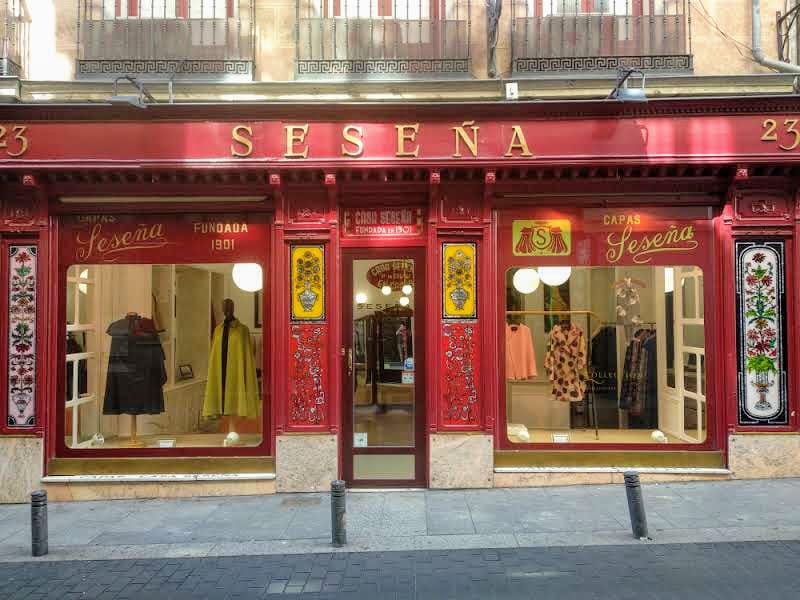
In Spanish, both cape and cloak can be referred to as capa. Back in Medieval times, however, there was a big distinction between two styles. The short capa was a status symbol reserved for royalty and the upper classes. The long capa, or cloak was for the common man. Obviously, capes were ornate affairs made from the finest materials, while common cloaks tended to be made from rough but warm material. Not only were they handy to use as a blanket if you wanted to take an impromptu snooze, they could also function as a screen when having a cheeky wee in the street or be used for hiding weapons beneath.
At one point so many ruffians were running around Madrid concealing weapons beneath their capes and subsequently mugging the city’s citizens that King Charles III decided to outlaw them, an act that led to a riot that almost toppled the monarchy.
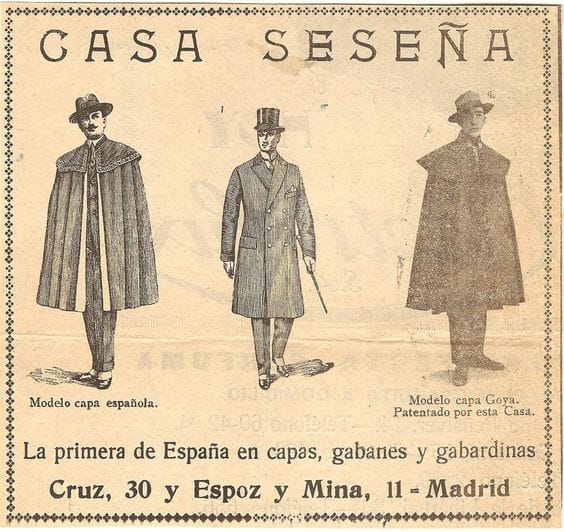
In business since 1901, the capes and cloaks on sale at Seseña have been worn by luminaries including Pablo Picasso, Nicolas Cage, and Hilary Clinton. While they do stock more traditional models, they have kept up with the times and now carry some very fashionable items indeed. – Calle de la Cruz, 23
Casa Yustas
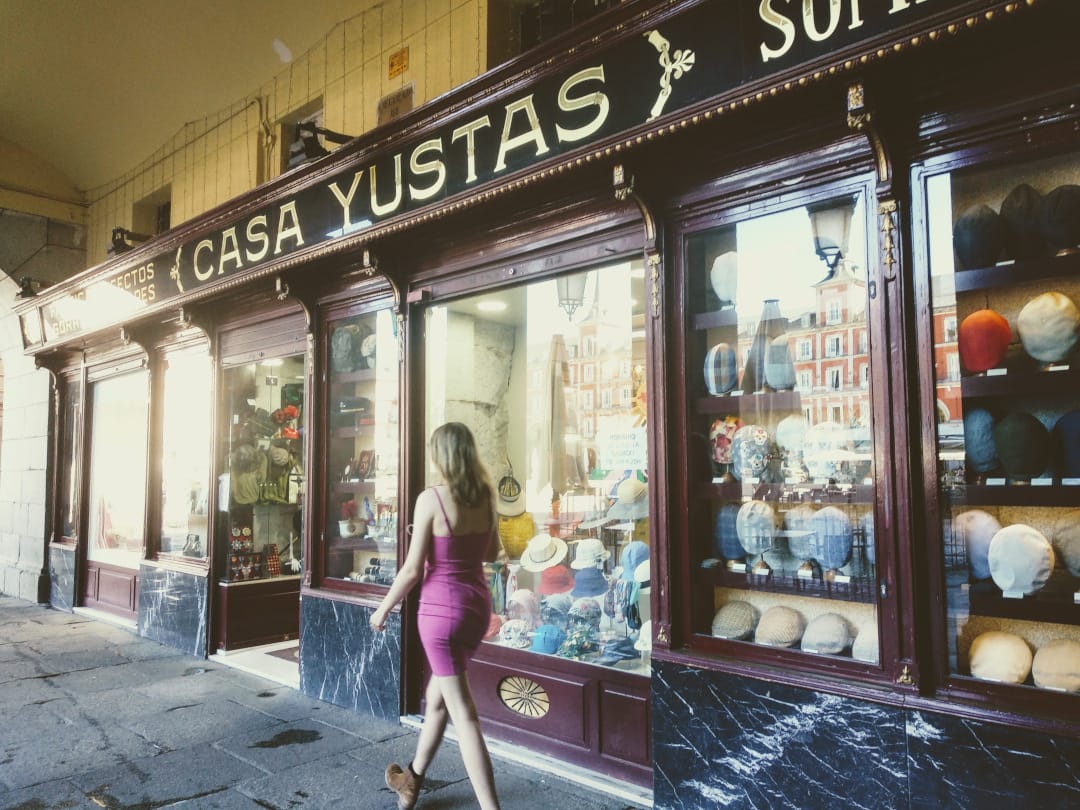
One of the oldest of Madrid’s oldest stores, this wonderful emporium was founded by the splendidly named Leopoldo Yustas Ayuso. Opened in 1886, Casa Yustas is a remnant from the time when guilds flourished in Madrid and haberdashers were all huddled together in and around Pontejos.
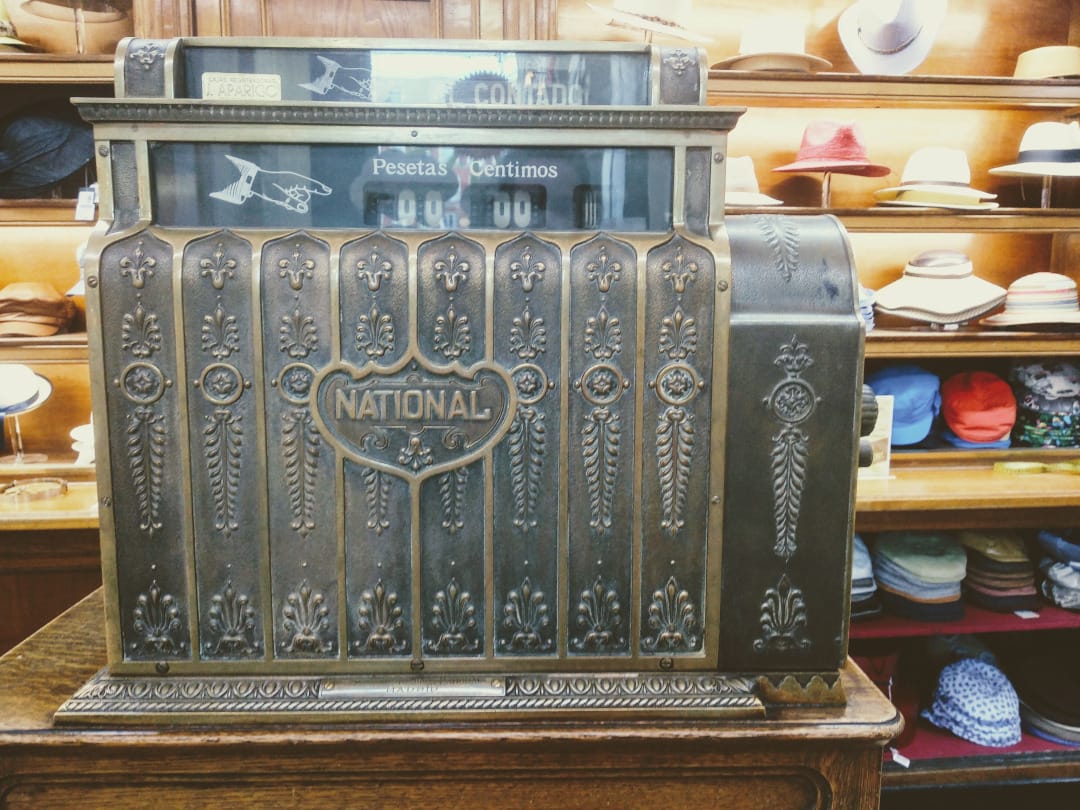
Because it’s located in the Plaza Mayor, it’s retained its original chestnut interior. It has also been declared, along with the square itself, an Artistic Historic Monument. Here you can buy all manner of fancy headgear for both the ladies and the stylish gent. From fedoras to Panama hats, to berets, to turbans, the enormous collection is spread over three floors. – Plaza Mayor, 30
Antigua Casa Crespo
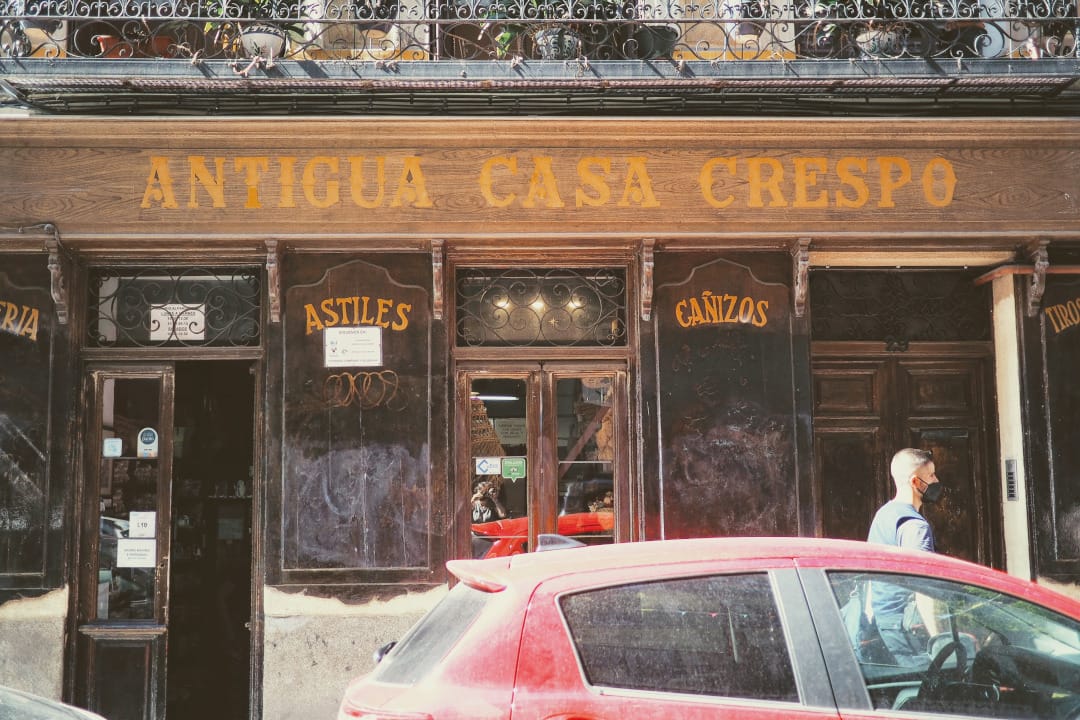
Espadrilles (alpargatas in Spanish) made the leap from Spanish peasant footwear to high fashion in 1948 when Lauren Bacall stepped onto the silver screen in an ankle-laced pair in the film Key Largo. They again flounced into the spotlight in the 1970s when Yves Saint Laurent teamed up with a Spanish espadrille manufacturer to create the now timeless wedge espadrille. Both these styles and more can be bought at Casa Crespo. Over the years, it has sold footwear to a number of high-profile patrons, including Queen Sofia of Spain.
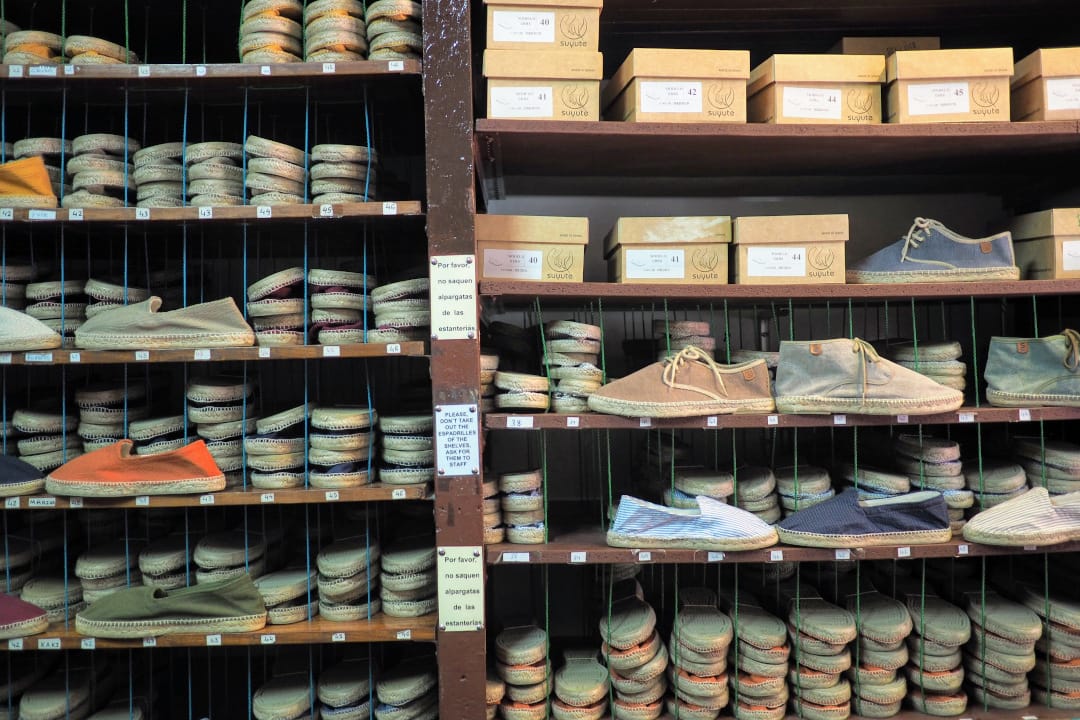
If you’re going to buy a pair yourself, this is the very best place to get them in Madrid. Handed down through five generations, this Malasaña institution has been in business since 1863. It’s one of a very few establishments that still sells espadrilles made from Spanish esparto rope. Not only that, but all shoes are handmade at their factory in La Rioja. Hardly credible when you look at the extremely reasonable prices! – Calle del Divino Pastor, 29
And there you have it, my personal pick of Madrid’s oldest stores. But these are not the only centennial establishments in the city. Which stores are your favorites?










